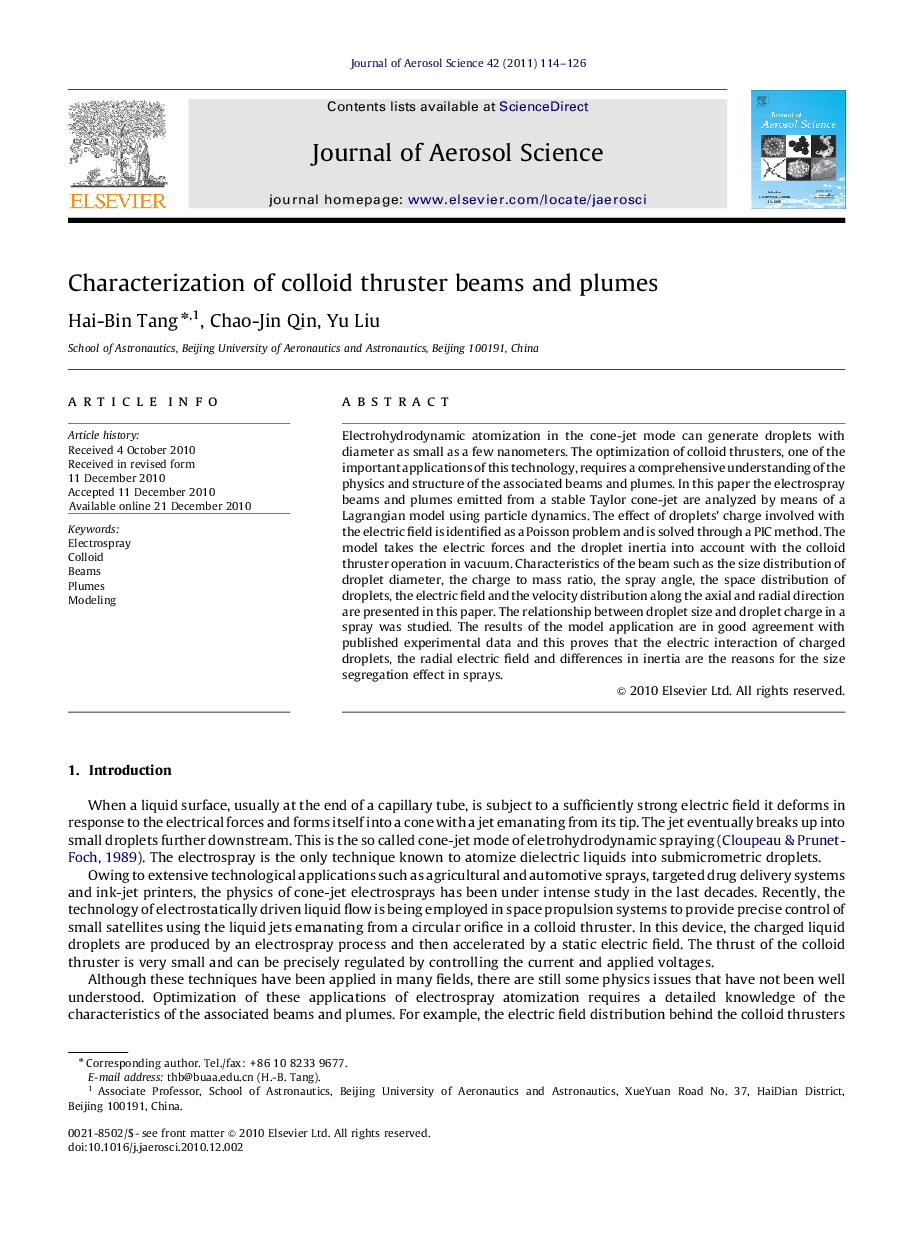| Article ID | Journal | Published Year | Pages | File Type |
|---|---|---|---|---|
| 4452763 | Journal of Aerosol Science | 2011 | 13 Pages |
Electrohydrodynamic atomization in the cone-jet mode can generate droplets with diameter as small as a few nanometers. The optimization of colloid thrusters, one of the important applications of this technology, requires a comprehensive understanding of the physics and structure of the associated beams and plumes. In this paper the electrospray beams and plumes emitted from a stable Taylor cone-jet are analyzed by means of a Lagrangian model using particle dynamics. The effect of droplets' charge involved with the electric field is identified as a Poisson problem and is solved through a PIC method. The model takes the electric forces and the droplet inertia into account with the colloid thruster operation in vacuum. Characteristics of the beam such as the size distribution of droplet diameter, the charge to mass ratio, the spray angle, the space distribution of droplets, the electric field and the velocity distribution along the axial and radial direction are presented in this paper. The relationship between droplet size and droplet charge in a spray was studied. The results of the model application are in good agreement with published experimental data and this proves that the electric interaction of charged droplets, the radial electric field and differences in inertia are the reasons for the size segregation effect in sprays.
Research highlights► A Lagrangian model combined with PIC method was used to simulate the beams. ► The electric field induced by space charge is evident. ► The influence of initial position on spray characteristics is not significant. ► Simulation results with q∼D1.5 or q∼D1.6 agree more with the experimental data.
